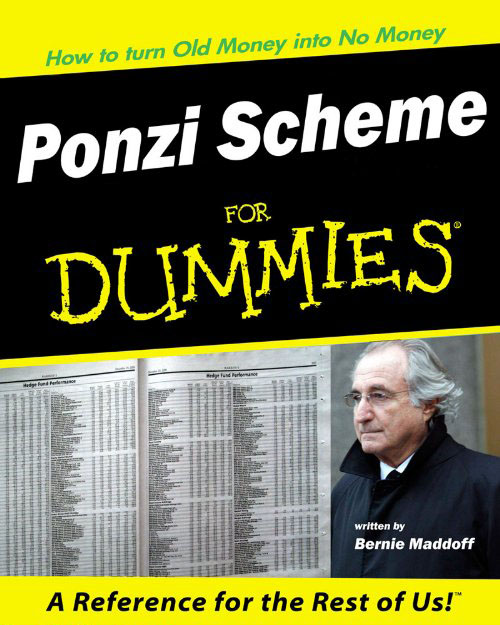Comes this news from California:
FOLSOM, CA – A Folsom investment firm that allegedly ran a $40 million Ponzi scheme drew largely from members of the Church of Jesus Christ of Latter-Day Saints, according to federal investigators.
Equity Investment Management and Trading, Inc. was headed up by Anthony Vassallo, 29. A professional networking Web site indicates Vassallo attended Brigham Young University between 1998 and 2003.
The alleged Ponzi scheme came to light Wednesday when the Securities and Exchange Commission filed a civil complaint in Sacramento federal court seeking to seize assets held by EIMT and levy fines against Vassallo and company vice president Kenneth Kenitzer, 66, of Pleasanton.
The complaint claims as many as 150 victims, drawn largely from Vassallo’s religious community, invested $40 million between May 2004 and November 2008.
One on those alleged victims is Kevin Stillion, 38, of Rancho Murieta, who said he gave Vassallo his life savings of $120,000 to invest in April of 2008.
“We know that we do have an account that does have some money in it, but it’s less than two percent or one percent,” Stillion said.
Here’s the corresponding press release from the US Securities and Exchange Commission.
Much has been written about Utah being the fraud capital of the US, though I suspect the various post-collapse frauds that are coming out (starting with Bernie Madoff’s Ponzi scheme, but certainly not ending there) make anything done in Utah look penny-ante. But there is a confluence between two pervasive concepts in Mormon society that feeds into such fraud:
- I can trust fellow Mormons professionally
- God will bless me financially if I pay my tithing, etc.
Contrary to what we may think, this is not unique to LDS society. Part of what has come out in the wake of the Madoff scandal is how many of his victims were Jews and Jewish organizations that felt they could trust Madoff because he was Jewish. As one of the earliest AP reports noted:
Investors big and small were swindled, from Florida retirees to celebrities such as Steven Spielberg, actor Kevin Bacon and Hall of Fame pitcher Sandy Koufax. Many of Madoff’s victims were Jews and Jewish charities, which trusted him because he is Jewish. Those cheated included Nobel Peace Prize winner and Holocaust survivor Elie Wiesel.
But back to the Vassallo scheme. Here’s what should have sent big warning bells off for anyone, LDS or not, who was considering investing (emphasis mine):
Investigators said investors were lured with the promise of monthly returns as great as 3.5 percent.
This is exactly the same thing that Madoff used to get his investors, though his standard pitch was a mere 1 percent/month (the FBI does say he did make some claims of annual returns approaching 45 percent, but the 1%/month figure shows up most often). That claim alone should have been enough to warn people away, particularly in an era where you’re lucky if your money market account offers a 3.5% annual return on saving.
But here’s the real kicker (again, emphasis mine):
Stillian [one of the victims] said he is not a member of the LDS church, but has Mormon friends who introduced him to Vassallo. “It was all about friends and family and trust,” he said, adding, “I sat there in his office and he showed me the returns,” Stillian said.
Dating all the way back to my undergrad years at BYU, I have made it a matter of standing policy that whenver anyone tries to get money from me (selling me something, investing, etc.) and brings the Church or related issues into it, my response is an automatic and irrevocable “No.” Any appeal to Church membership, Church authorities, personal claimed worthiness (“When I was in the temple the other day…”), etc., is a big red flag that the pitch being made cannot stand on its own merits.
The sad thing is that most Mormons are honest in their dealings with others, including their fellow Mormons. Tthat’s what makes the occasional fraud like this both effective and devestating. Those who take advantage of that trust are truly wolves in sheep’s clothing. Like the moneychangers in at the temple in Jerusalem, they turn the house of God into a den of thieves — but, unlike the moneychangers, they do so having sworn a solemn oath to take Christ’s name upon themselves. I for one would not want to be in their shoes when they face the Savior’s wrath. ..bruce..

